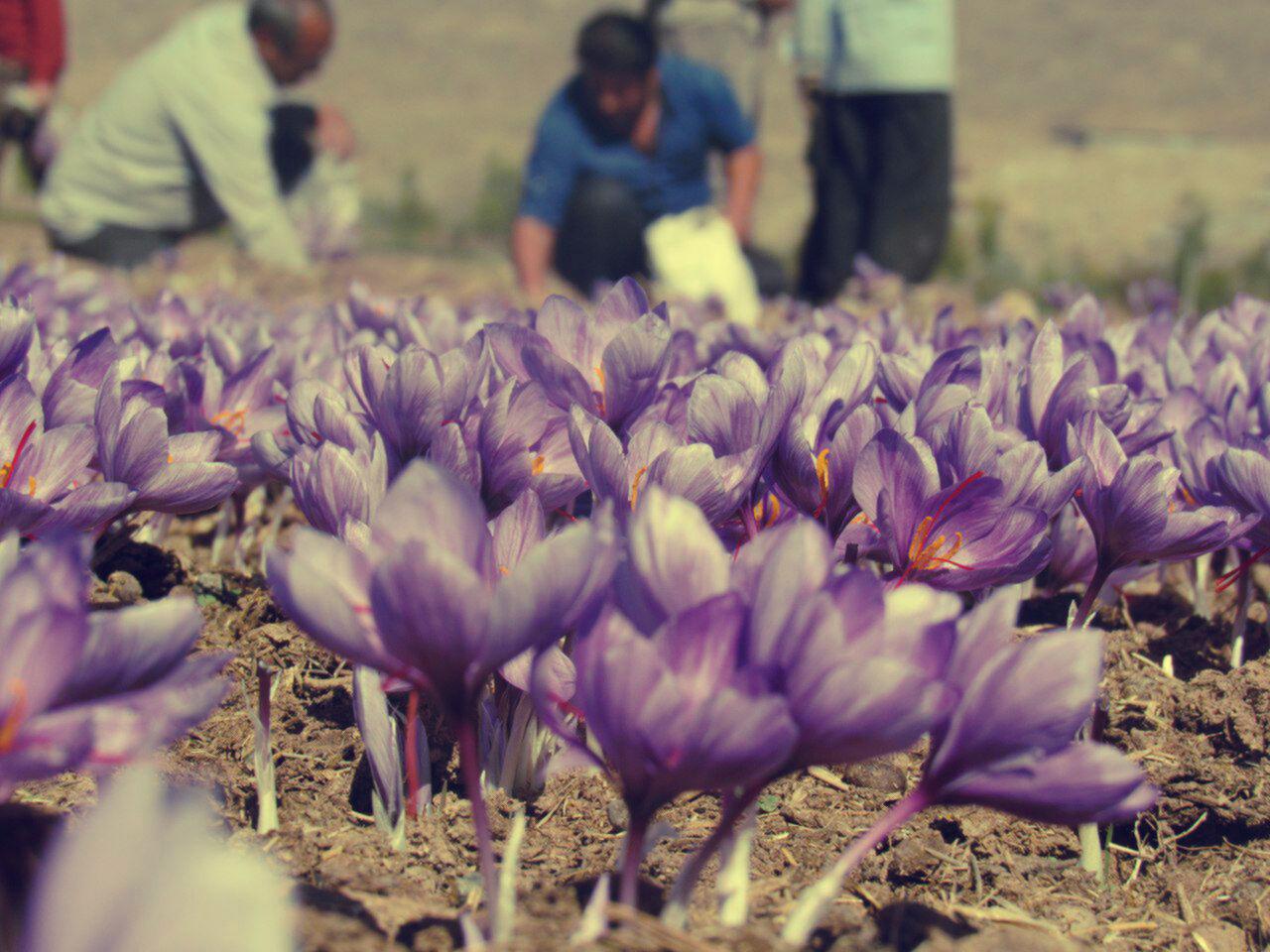

For quality saffron, it has to manage the growth stages, especially the irrigation dates of the plant. Saffron is a plant that needs little water and, given that the saffron onion is planted at a depth of 20 cm, it should be given some water to reach its maximum moisture content to a depth of 40 cm on the ground because the water penetrates at a greater depth. The root of saffron is not absorbed and wasted. Instead of irrigation, the number of irrigation can be increased, which will be better.
Saffron irrigation is started in different parts depending on the weather conditions of the region from early October to the first december of November.
Saffron irrigation time in the first year of cultivation:
It is better to do not have any irrigation in any of the cultivation date in June, in September, because, given the possibility of severe infestation of onions, ticks and mushrooms, if irrigated, increase sharply and even in some cases Leads to the complete destruction of the farm. So try to avoid irrigation at the time of cultivation either before cultivating or after cultivation. The first irrigation should be done according to the temperature of the environment. It should be noted that the first year of cultivation because we do not expect flowers can begin irrigation sooner. That is, it is better to irrigate freshly planted onions from the beginning of October. Note that if the saffron bulb is infected with mites, it is best to wait until the air cools down and then start the irrigation.
Usually, saffron farms are irrigated five times a year, and the following is the time for each of these irrigation:
First water (water load): Due to the fact that irrigation acts to stimulate the plant and wake the plant from the wake of the first water, the first water should be done very carefully and sensitively to avoid saffron harvesting. In the cold regions in early October, a crackdown occurs after irrigation and three weeks later the flowers are plotted.
Second water (Zach): Usually occurs 40 days after the first irrigation. The requirements of this irrigation are that before it we must spread about 100 kg of urea fertilizer per hectare to increase vegetative growth in the field and then irrigate it.
Two high irrigation programs are very important in developing the roots of saffron bulbs and feeding them, planting and planting.
In the autumn, when the drought is dry, and the warm air front is coming to a halt, third water is also needed in December, but you should be very careful not to be exposed to frost.
Third water: On the farm, winter weeds are weed. So, in early March, irrigation will be done in March, which will make weeding easier. That’s why weeding is known as weeding.
Fourth water: this water, which is given until late March, is important to keep the onion moist in the soil. In the wet years, and in cold places, the same four water is counted.
Fifth Water (Yellow Water): This water, which occurs before saffron leaves yellow, is the latest irrigation of saffron, and usually occurs in April.



